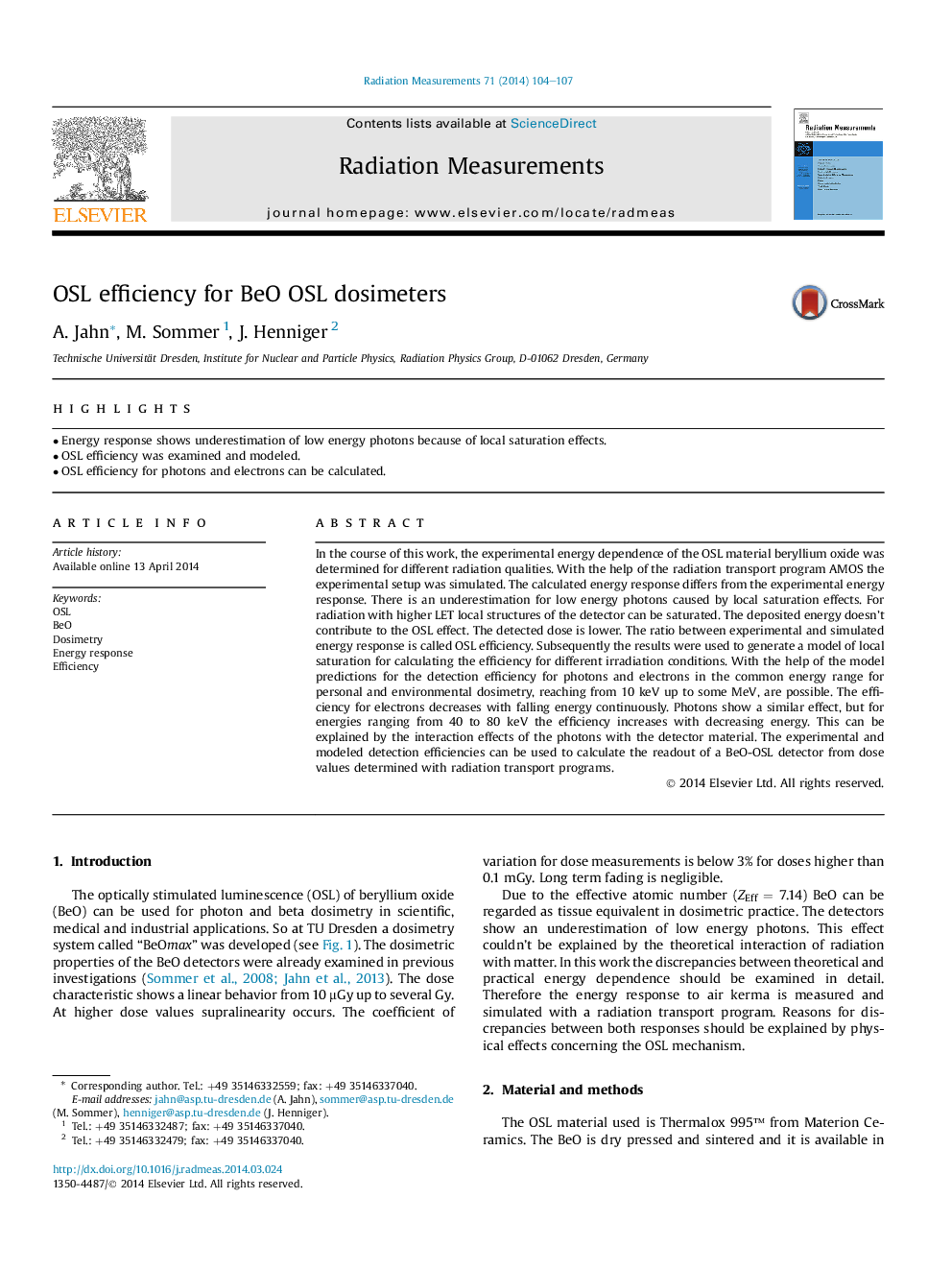| Article ID | Journal | Published Year | Pages | File Type |
|---|---|---|---|---|
| 1880561 | Radiation Measurements | 2014 | 4 Pages |
•Energy response shows underestimation of low energy photons because of local saturation effects.•OSL efficiency was examined and modeled.•OSL efficiency for photons and electrons can be calculated.
In the course of this work, the experimental energy dependence of the OSL material beryllium oxide was determined for different radiation qualities. With the help of the radiation transport program AMOS the experimental setup was simulated. The calculated energy response differs from the experimental energy response. There is an underestimation for low energy photons caused by local saturation effects. For radiation with higher LET local structures of the detector can be saturated. The deposited energy doesn't contribute to the OSL effect. The detected dose is lower. The ratio between experimental and simulated energy response is called OSL efficiency. Subsequently the results were used to generate a model of local saturation for calculating the efficiency for different irradiation conditions. With the help of the model predictions for the detection efficiency for photons and electrons in the common energy range for personal and environmental dosimetry, reaching from 10 keV up to some MeV, are possible. The efficiency for electrons decreases with falling energy continuously. Photons show a similar effect, but for energies ranging from 40 to 80 keV the efficiency increases with decreasing energy. This can be explained by the interaction effects of the photons with the detector material. The experimental and modeled detection efficiencies can be used to calculate the readout of a BeO-OSL detector from dose values determined with radiation transport programs.
